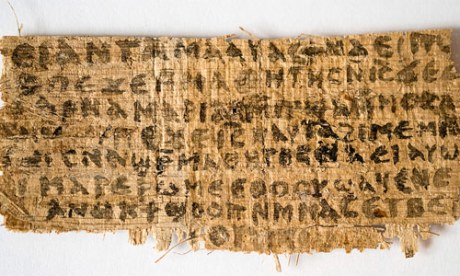Fresh evidence has raised new doubts about the authenticity of the so-called “Gospel of Jesus’ Wife” papyrus.
The tiny papyrus, no bigger than a business card, has sparked controversy among scholars since it was unveiled by Harvard historian Dr Karen King in 2012.
Dr King then called it a valuable clue that some early Christians believed Jesus was married.
“The Gospel of Jesus’ wife” consists of just eight lines and they show an interrupted conversation.
Among its phrases were “Jesus said to them, ‘My wife. . .’ ” and “she will be able to be my disciple”.
But articles in the Wall Street Journal and the New York Times detail findings by a Coptic expert at Indiana Wesleyan University that cast doubts on the papyrus.
Dr Christian Askeland posits that it matches another document, the “Gospel of John” fragment, which is clearly a forgery.
The two documents have many similarities—including the handwriting, ink and writing instrument used.
The ”John” piece was written in a dialect of Coptic known to have died out before the papyrus it was written on could have been made, tests show.
It also appears to have been copied from another Coptic document discovered in 1923, even repeating its line breaks.
Dr Askeland concluded that both the “John” and the “wife” papyri were written by the same hand.
Many scholars now consider the debate over, declaring the “Gospel of Jesus’ Wife” is a clever fake.
Dr King, who unveiled the wife papyrus in 2012, admitted these latest criticisms should be taken seriously.
“This is one option that should receive serious consideration, but I don’t think it’s a done deal,” she told the New York Times.
Last month, the Harvard Theological Review published the results of scientific tests on the wife papyrus.
These revealed that radiocarbon tests produced a date of 659 to 859 CE.
The ink used was also consistent with other ancient documents, tests showed.
The Review published experts who wrote that they could find no apparent evidence of forgery.
Sources
